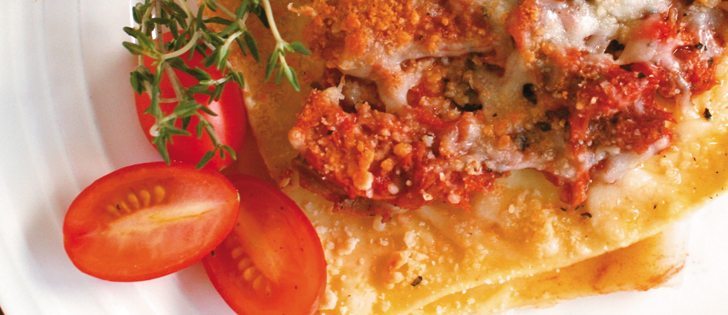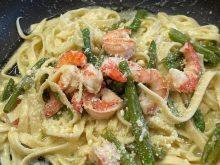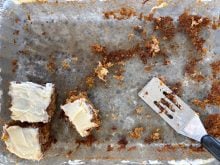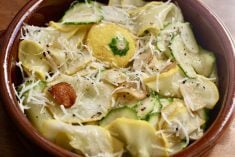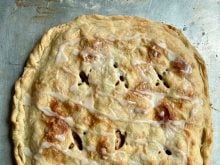Making fresh pasta is not difficult. Start with a reliable recipe and follow it carefully. If you don’t have a pasta machine, it can be rolled and cut by hand. If rolling by hand, let the dough relax periodically and then continue rolling.
Clean your pasta machine carefully. Wait until the dough stuck in the machine is completely dry.
The rollers on your pasta machine are made from carbon steel. If you wash them with water, they will rust, no matter how careful you are. Rusted and pitted rollers will tear the pasta as you process it.
Read Also

Know what costs are involved in keeping crops in the bin
When you’re looking at full bins and rising calf prices, the human reflex is to hold on and hope for more. That’s not a plan. It’s a bet. Storage has a price tag.
Clean the main frame with a warm soapy soft cloth. Work carefully to ensure that water does not spill onto the rollers and dry immediately.
Clean rollers by turning the handle and running a toothbrush back and forth across each roller. Store your pasta machine in a dry place.
Pasta Dough
- 1 2/3 c. unbleached all purpose flour 400 mL
- 1 2/3 c. semolina or durum flour 400 mL
- 3 large eggs
- 8 egg yolks
Combine flours and place in a mound on the countertop. Make a large well in the centre and add all eggs. With a fork or your fingers, break the yolks and gradually mix in the flour from the edges of the well until you have shaggy, soft dough.
Decide if you need to add water to incorporate all the flour because it cannot be added after kneading has begun.
Form dough into a ball and knead until smooth and elastic. Cut into four pieces and flatten to rectangles that will fit in the pasta machine. Wrap in plastic and refrigerate for an hour to let the gluten relax.
Begin rolling pasta on the widest setting on the machine. Roll once and fold in half and roll again. Now change the setting on the machine by one notch each time you pass the pasta through until you have reached the desired thickness. It is now ready to cut into strips with the machine or sheets by hand. Toss cut pasta with a small amount of flour to prevent the pieces from sticking together.
Fresh pasta will keep one day in the refrigerator or can be frozen up to a month. Pasta can be dried by hanging over dowels or a chair back.
Walnut Butter
- 1 c. walnuts, toasted 250 mL
Set aside a few toasted walnuts for garnish. Puree remainder in food processor or blender for about three minutes. No extra oil should be required.
Mushroom Ravioli in Walnut Sauce
Filling:
- 1 oz. dried mixed wild mushrooms, reconstituted and chopped 30 g
- extra virgin olive oil
- 1 clove garlic, finely chopped
- 1/2 c. soft goat cheese 125 mL
- small bunch of flat leaf parsley, finely chopped
- salt and pepper
Sauce:
- 1/4 c. walnut butter 60 mL
- extra virgin olive oil
- 1/4 c. parmesan cheese, grated 60 mL
- pepper
- 1/2 clove garlic
Make the filling by sauteing mushrooms in oil and garlic, then mix with goat cheese and parsley. Season to taste and cool. Roll sheets of pasta and use a ravioli press or a knife cut into two-inch (5 cm) squares.
Place a teaspoon (5 mL) of filling on the pasta, lay a second square on top and press closed to seal out all air with your fingers. Boil in salted boiling water and drain when al dente.
To make walnut sauce, saute garlic in olive oil. Add walnut butter to melt, then add grated parmesan and coarsely ground black pepper. Toss ravioli with sauce.
If sauce is too thick, loosen it up with a little of the pasta water. Serve immediately with a few chopped toasted walnuts. Serves four.
Rabbit Ragu
This slow cooker recipe can be made with cubed boneless veal shoulder or chicken if rabbit is not available.
- 1 tbsp. finely chopped fresh sage 15 mL
- 1 1/2 tsp. finely chopped fresh rosemary 7 mL
- 2 tbsp. olive oil 30 mL
- 3 lb. rabbit 1.5 kg
- 1 medium onion
- 2 medium carrots
- 1 celery rib, chopped
- 1 c. chicken stock 250 mL
- 1 – 28 oz. can crushed tomatoes 800 mL
- 1 1/2 tsp. coarse sea salt 7 mL
- 1/2 tsp. coarsely ground 2 mL
- black pepper
Heat oil in heavy skillet over moderate heat until hot. Add onion, carrots and celery. Saute until translucent. Add sage and rosemary and cook 30 seconds.
Add wine and simmer, uncovered, stirring occasionally, until liquid is reduced to about one cup, 10 to 15 minutes. Add tomatoes, sea salt and pepper and simmer. Add to preheated slow cooker.
Add whole rabbit to slow cooker, cover and cook on high for four hours or until meat falls off the bone. Remove rabbit and cool so it can be handled and pull meat off bones and return meat to slow cooker. Discard bones.
Layer with two or three four-inch square sheets of pasta and top with grated cheeses. Set under broiler to melt the cheese and serve. It can be made a day ahead and cooled completely, uncovered, then chilled, covered. – Source: adapted from Gourmet magazine.
Spicy duck meatballs
Duck meat is not easy to find in the grocery stores but the meat from a whole duck can be ground. This is also good using wild duck.
- 2 tbsp. duck fat or olive oil 30 mL
- 1 c. onion, finely chopped 250 mL
- 3 cloves garlic, finely chopped
- 1 lb. ground duck 0.5 kg
- 1 tbsp. coarsely chopped sage 15 mL
- 2 tbsp. chile sauce, such as sriracha 30 mL
- 1/4 c. panko bread crumbs 60 mL
- 2 large eggs, lightly beaten
- coarse salt and freshly ground pepper
- 1/2 c. white wine 125 mL
- 1 c. veal or chicken stock 250 mL
- 2 sprigs fresh thyme
- 6 Roma tomatoes, chopped or 2 c. tomato sauce 500 mL
- grated parmesan cheese
Heat one tablespoon (15 mL) of olive oil in a large skillet over medium heat. Add onion and two cloves of garlic. Cook, stirring until translucent, about five minutes. Remove from heat and allow to cool.
Preheat oven to 425 F (220 C). Place ground duck in stainless steel bowl, then add cooled onion and garlic mixture.
Add sage, sriracha, panko, eggs, salt and pepper. Form into two-inch (5 cm) balls and place on a baking sheet. Cook for 10 minutes in oven.
In a separate pot add wine, stock, tomatoes and thyme. Bring to a boil and simmer until reduced, about 30 minutes. Transfer meatballs to liquid and cook over medium heat. Let meatballs simmer until cooked through, about 25 minutes.
Serve with a wide cut pasta and grated cheese. Serves four.


